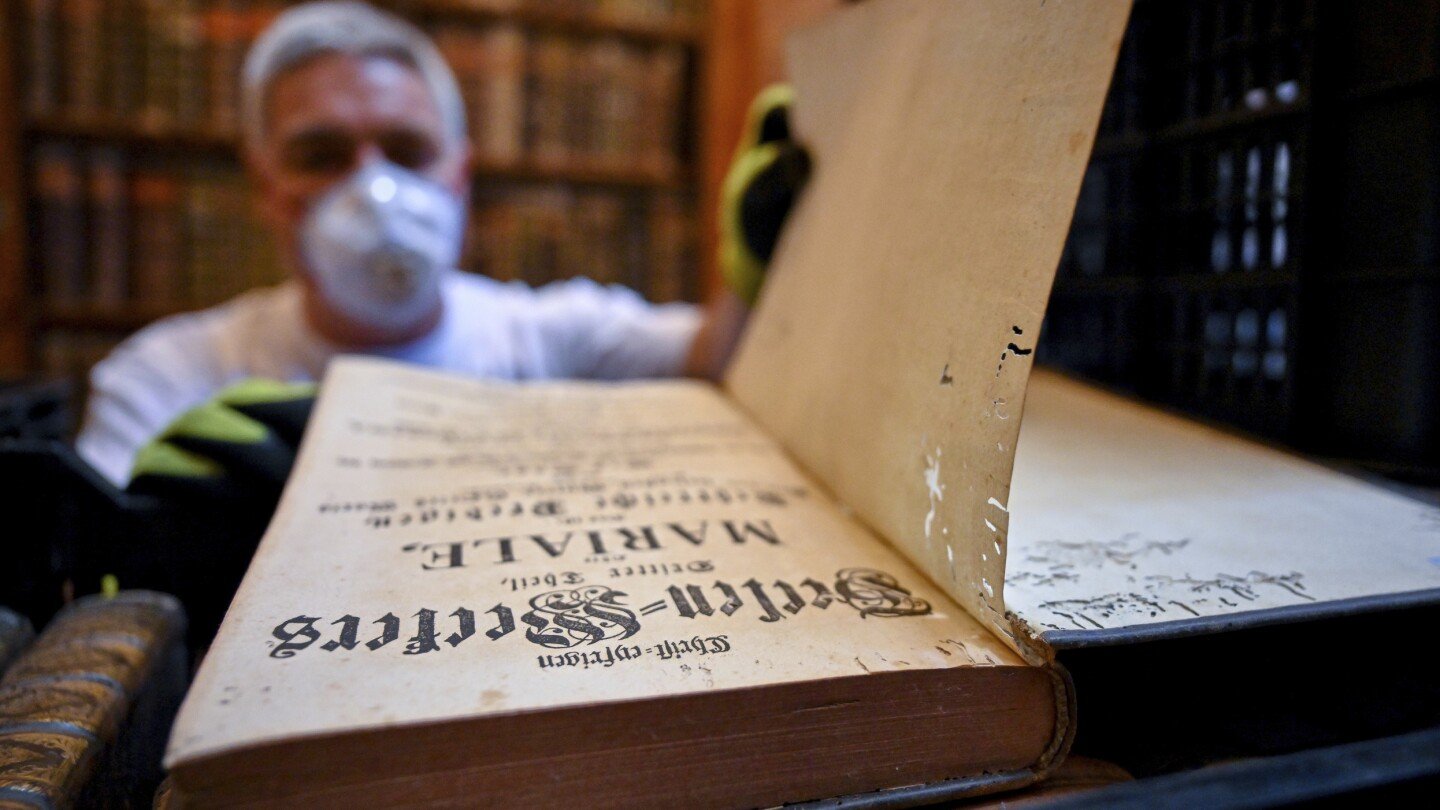Lifestyle
Sliding mitts are taking over youth baseball

PITTSBURGH (AP) — Andrew McCutchen hasn’t had the conversation with 7-year-old son Steel yet, but the Pittsburgh Pirates star knows it’s probably coming at some point.
Steel, already playing in a youth baseball league, will probably come home at one point and ask his five-time All-Star father if he can have whatever hot item his teammates might be wearing during a given spring.
McCutchen plans to accommodate Steel up to a point. The oldest of McCutchen’s four children is already rocking an arm sleeve, just the way dad does.
Yet if Steel is hoping his father will spring for a sliding mitt — a padded glove a player can slip over one of their hands to protect it should the hand get stepped on while diving headfirst for a base — he probably shouldn’t get his hopes up.
McCutchen, who has stolen 220 bases at the major league level, has never worn one. And he’s quick to point out the next time the cleat of a fielder mashes his hand will also be the first.
Still, the 38-year-old understands. Once upon a time, he was a 20-something who epitomized baseball cool, from his dreadlocks (long since shorn) to his goatee to his rope chain to the occasional skull cap he wore underneath his batting helmet, all of it designed to accentuate McCutchen’s innate blend of talent and charisma.
“It’s all about the drip,” McCutchen said with a smile.
Even if the “drip” (Gen Z slang for stylish clothes and their accessories) emphasizes fashion over function, particularly when it comes to the gloves — which look a bit like oven mitts — that are becoming just as ubiquitous in the Little Leagues as they are in the major leagues.
Safety and self-expression
Former major leaguer Scott Podsednik (career stolen base total: 309) is credited with “inventing” the sliding mitt during the late stages of his 11-year career.
Tired of having his hand stepped on, Podsednik worked with a hand therapist for a solution. The initial mitts were relatively simple. A 2009 picture of Podsednik sliding into second base shows his left hand covered in what looks like a padded modified batting glove, all wrapped in black to match the trim on his Chicago White Sox uniform.
Chicago White Sox’s Scott Podsednik steals second base during a baseball game against the Cleveland Indians, June 29, 2009, in Cleveland. (AP Photo/Mark Duncan, File)
Things have gotten considerably more intricate over the years. Google “sliding mitt designs” and you’ll find themes ranging from the American flag to an ice cream cone to aliens to a poop emoji ( yes, really ).
Scott McMillen, a lawyer in the Chicago area, had no plans to get into the baseball accessory business. He first took notice of sliding mitts when his son Braydon, then 10, pointed out one of his teammates had one and said basically, “Oh hey dad, wouldn’t it be nice if I had one, too.”
They headed to a local sporting goods store, where McMillen was surprised at the variety available.
That was around 2021. By early 2024, McMillen had launched “ Goat’d,” a specialty baseball accessory company with everything from sliding mitts to batting gloves to arm sleeves to headbands and more, many of them religiously inspired.
Sales during their first full year? Over 1 million units.
“We were surprised at how large the marketplace is,” McMillen said.
Maybe he shouldn’t have been.
Youth sports have bounced back from the COVID-19 pandemic. The Aspen Institute’s 2024 State of Play report noted that the participation levels in sports among children ages 6-17 were the highest they’ve been since 2015. Baseball’s numbers have steadied following a decline. Little League International told The Associated Press last fall that more than 2 million kids played baseball or softball under its umbrella across the world, an uptick over 2019.
Many of those kids are also fans of the game, some of whom may have noticed their favorite major leaguer sporting a mitt when they’re on the bases. Yes, that was San Diego Padres star Fernando Tatis Jr. sliding across home plate ( feetfirst, by the way ) with a bright yellow mitt on his left hand in the ninth inning of a 2-1 win over Pittsburgh last weekend.
It’s one of the many ways in which the game has evolved over the years. When McMillen grew up, there wasn’t much swag to go around.
“We had our baseball uniform and our glove (and) everyone looked the same, everyone was the same,” he said. “Now, everyone wants to express themselves individually. The best way to do that without acting like a clown is to wear something that shows people who you are.”
Self-expression, however, doesn’t exactly come cheap, particularly in an era when top-of-the-line bats are $400 or more. What amounts to an entry-level sliding mitt can go for $40, but Goat’d and others have versions that can fetch double that.
That hasn’t stopped sales from being brisk, and McMillen points out it’s not merely a luxury item.
“We don’t play football with 1940s safety equipment,” he said. “You feel better in the (batter’s) box when you have something that protects you, right? With a sliding mitt, it’s also like, ‘Hey this is fun. It’s cool. I want to be like my fave high school player, like my favorite college player.’”
It’s becoming increasingly common for McMillen and other members of the company’s staff to spot Goat’d gear at the field. In recent months, they’ve popped up in youth tournaments from Georgia to Las Vegas, sometimes in the back pockets of players as young as 6 or 7. McMillen can’t help but shake his head to see his product become part of the time-honored tradition of kids imitating their heroes.
Which is good for business and, oh by the way, probably unnecessary.
The pressure to keep up
Here’s the thing: In most — if not all — youth baseball leagues, headfirst slides that would require a player to stretch out their hand to secure the bag are illegal.
In Little League, for example, stealing bases for players 12 and under is rare because the player can take off only after the ball has reached the batter. And even if they do bolt for the next base, they have to slide feetfirst. The only times in Little League that a baserunner can dive headfirst toward a base is when they are returning to it while in a rundown or during a pickoff attempt, both of which are also rare.
That doesn’t stop the players from wanting a sliding mitt. It also doesn’t stop their parents from buying them, all part of the pressure to “keep up with the Jones” that has practically been a part of youth sports culture since the first time somebody came to practice with a batting glove or wristbands.
It’s a phenomenon Chelsea Cahill and her family has known for years. The longtime educator who lives just east of Columbus, Ohio, has spent most of the last decade shuttling her three boys from practice to games to tournaments.
What she and her husband have learned over the years is that some trends come and go, but the pressure to have the right stuff remains.
“There’s always that feeling of ‘This is the next new thing’ or ‘This is what you’ve got to get,’” Cahill said.
They appeased their sons up to a point, but only up to a point.
Last summer their youngest son Braxton, then 11, and the rest of the kids on his travel team kept pestering their parents to buy sliding mitts. Entering the final tournament, the team moms decided to give in.
Sort of.
Rather than plop down that kind of money for something they didn’t actually need, the moms headed to a local dollar store and bought them actual oven mitts — the kind used to pull tonight’s dinner from out of the oven. Average retail price? Less than a cup of coffee at the gas station.
Oh, and the kids loved them, and wore them during the game. Cahill posted video of them playing with the mitts stuck in their back pocket to her TikTok account. The video is now at 12 million views and counting.
“They thought it was hilarious, but we didn’t really think they would wear them for the rest of the tournament,” Cahill said. “We were wrong. They really embraced it!”
Among viewers of that TikTok, by the way, were the people at Goat’d, who sent Braxton a couple of mitts as a result.
The good news is, Cahill now won’t have to buy one for Braxton this spring. Yet there’s also something else she has learned through the years: This time in her boys’ lives is fleeting.
For proof, just look at her calendar. Her two older sons — the ones who played travel baseball just like Braxton, and asked for all the cool stuff their teammates had, just like Braxton has — gave up baseball by the time they got to high school.
Her advice to parents who might be feeling the financial pinch of what it takes to play these days: Relax.
“We’ve learned as parents is to stop taking it so seriously,” she said. “They’re kids. Let them have fun.”
The reality
A day after hundreds of members of the Monroeville Baseball and Softball Association marched through the Pittsburgh suburb’s well-appointed community park, the regular season is in full swing.
All four fields are alive with the chatter of coaches, parents and boys and girls aged anywhere from 5-12.
Over on Field 1, the Rays are in the middle of their season opener. Playing first base, Josiah Jones has his glove at the ready, with a black sliding mitt noticeably sticking out of his left back pocket.
Per the league rules, the Rays and the other players at the “Bronco” level (ages 11-12), play actual full-on baseball. They can take leads and steal bases whenever they like, though headfirst slides are only allowed when returning to a base, just like in Little League.
Longtime MBSA executive commissioner Josh Plassmeyer is milling about, trying to keep tabs on everything. Plassmeyer outlawed sliding mitts on his son Grant’s 10-and-under tournament team, calling them a “distraction” because players would spend so much time fiddling with them once they got to first base, they would miss signs from the third-base coach.
About 50 feet away, Jones settles into the box and rips a ball to left-center field. His long legs carry him past first base, and he cruises into second with an easy double.
As his teammates erupted in the dugout, Jones beamed for a brief moment. Then, as the opposing pitcher stepped onto the rubber, he took an aggressive lead off second and eyed third.
His back pocket, the one where his sliding mitt had been 30 minutes before, was empty.
___
AP MLB: https://apnews.com/hub/mlb
Lifestyle
Hungary’s oldest library is fighting to save 100,000 books from a beetle infestation

PANNONHALMA, Hungary (AP) — Tens of thousands of centuries-old books are being pulled from the shelves of a medieval abbey in Hungary in an effort to save them from a beetle infestation that could wipe out centuries of history.
The 1,000-year-old Pannonhalma Archabbey is a sprawling Benedictine monastery that is one of Hungary’s oldest centers of learning and a UNESCO World Heritage site.
Restoration workers are removing about 100,000 handbound books from their shelves and carefully placing them in crates, the start of a disinfection process that aims to kill the tiny beetles burrowed into them.
The drugstore beetle, also known as the bread beetle, is often found among dried foodstuffs like grains, flour and spices. But they also are attracted to the gelatin and starch-based adhesives found in books.
They have been found in a section of the library housing around a quarter of the abbey’s 400,000 volumes.
“This is an advanced insect infestation which has been detected in several parts of the library, so the entire collection is classified as infected and must be treated all at the same time,” said Zsófia Edit Hajdu, the chief restorer on the project. “We’ve never encountered such a degree of infection before.”
Abbey houses historical treasures
The beetle invasion was first detected during a routine library cleaning. Employees noticed unusual layers of dust on the shelves and then saw that holes had been burrowed into some of the book spines. Upon opening the volumes, burrow holes could be seen in the paper where the beetles chewed through.
The abbey at Pannonhalma was founded in 996, four years before the establishment of the Hungarian Kingdom. Sitting upon a tall hill in northwestern Hungary, the abbey houses the country’s oldest collection of books, as well as many of its earliest and most important written records.
For over 1,000 years, the abbey has been among the most prominent religious and cultural sites in Hungary and all of Central Europe, surviving centuries of wars and foreign incursions such as the Ottoman invasion and occupation of Hungary in the 16th century.
Ilona Ásványi, director of the Pannonhalma Archabbey library, said she is “humbled” by the historical and cultural treasures the collection holds whenever she enters.
“It is dizzying to think that there was a library here a thousand years ago, and that we are the keepers of the first book catalogue in Hungary,” she said.
Among the library’s most outstanding works are 19 codices, including a complete Bible from the 13th century. It also houses several hundred manuscripts predating the invention of the printing press in the mid-15th century and tens of thousands of books from the 16th century.
While the oldest and rarest prints and books are stored separately and have not been infected, Ásványi said any damage to the collection represents a blow to cultural, historical and religious heritage.
“When I see a book chewed up by a beetle or infected in any other way, I feel that no matter how many copies are published and how replaceable the book is, a piece of culture has been lost,” she said.
Books will spend weeks in an oxygen-free environment
To kill the beetles, the crates of books are being placed into tall, hermetically sealed plastic sacks from which all oxygen is removed. After six weeks in the pure nitrogen environment, the abbey hopes all the beetles will be destroyed.
Before being reshelved, each book will be individually inspected and vacuumed. Any book damaged by the pests will be set aside for later restoration work.
Climate change may have contributed
The abbey, which hopes to reopen the library at the beginning of next year, believes the effects of climate change played a role in spurring the beetle infestation as average temperatures rise rapidly in Hungary.
Hajdu, the chief restorer, said higher temperatures have allowed the beetles to undergo several more development cycles annually than they could in cooler weather.
“Higher temperatures are favorable for the life of insects,” she said. “So far we’ve mostly dealt with mold damage in both depositories and in open collections. But now I think more and more insect infestations will appear due to global warming.”
The library’s director said life in a Benedictine abbey is governed by a set of rules in use for nearly 15 centuries, a code that obliges them to do everything possible to save its vast collection.
“It says in the Rule of Saint Benedict that all the property of the monastery should be considered as of the same value as the sacred vessel of the altar,” Ásványi said. “I feel the responsibility of what this preservation and conservation really means.”
Lifestyle
Osprey are declining and environmentalists blame fishing industry’s take of menhaden

GLOUCESTER POINT, Va. (AP) — Stepping onto an old wooden duck blind in the middle of the York River, Bryan Watts looks down at a circle of sticks and pine cones on the weathered, guano-spattered platform. It’s a failed osprey nest, taken over by diving terns.
“The birds never laid here this year,” said Watts, near the mouth of Virginia’s Chesapeake Bay. “And that’s a pattern we’ve been seeing these last couple of years.”
An osprey is silhouetted as it perches atop a nest on the Lynnhaven River, June 30, 2025, in Virgina Beach, Va. (AP Photo/Stephanie Scarbrough)
Watts has a more intimate relationship with ospreys than most people have with a bird — he has climbed to their nests to free them from plastic bags, fed them by hand and monitored their eggs with telescopic mirrors.
The fish-eating raptor known for gymnastic dives and whistle-like chirps is an American conservation success story. After pesticides and other hazards nearly eliminated the species from much of the country, the hawk-like bird rebounded after the banning of DDT in 1972 and now numbers in the thousands in the U.S.
An osprey flies with a half-eaten fish in its talons above the Lynnhaven River, June 30, 2025, in Virginia Beach, Va. (AP Photo/Stephanie Scarbrough)
But Watts has documented an alarming trend. The birds, which breed in many parts of the U.S., are failing to successfully fledge enough chicks around their key population center of the Chesapeake Bay. The longtime biologist blames the decline of menhaden, a small schooling fish critical to the osprey diet. Without menhaden to eat, chicks are starving and dying in nests, Watts said.
Osprey are an environmental indicator
Watts’s claim has put him and environmental groups at odds with the fishing industry, trade unions and sometimes government regulators. Menhaden is valuable for fish oil, fish meal and agricultural food as well as bait.
U.S. fishermen have caught at least 1.1 billion pounds of menhaden every year since 1951. Members of the industry tout its sustainability and said the decline in osprey may have nothing to do with fishing.
But without help, the osprey population could tumble to levels not seen since the dark days of DDT, said Watts, director of the Center for Conservation Biology at The College of William & Mary in Williamsburg, Virginia.
Brian Watts, research professor and director of the Center for Conservation Biology at The College of William & Mary, looks over at failed osprey nest atop a wooden duck blind on the Lower York River, June 30, 2025, in Gloucester Point, Va. (AP Photo/Stephanie Scarbrough)
“The osprey are yelling pretty loudly that, hey, there’s not enough menhaden for us to reproduce successfully,” Watts said. “And we should be listening to them to be more informed fully on the fisheries side, and we should take precaution on the fisheries management side. But that hasn’t won the day at this point.”
Decline linked to menhaden in studies
Watts, who has studied osprey on the Chesapeake for decades, has backed his claims of population decline by publishing studies in scientific journals. He said it boils down to a simple statistic — to maintain population, osprey pairs need to average 1.15 chicks per year.
Osprey were reproducing at that level in the 1980s, but today in some areas around the main stem of the Chesapeake, it’s less than half of that, Watts said. In particularly distressed areas, they aren’t even reproducing at one-tenth that level, he said. And the decline in available menhaden matches the areas of nesting failure, Watts said.
A bald eagle, left, steals a fish from an osprey before it could feed above the Lynnhaven River, June 30, 2025, in Virginia Beach, Va. (AP Photo/Stephanie Scarbrough)
Also called pogies or bunkers, the oily menhaden are especially important for young birds because they are more nutritious than other fish in the sea. Osprey “reproductive performance is inextricably linked to the availability and abundance” of menhaden, Watts wrote in a 2023 study published in Frontiers in Marine Science.
Conservationists have been concerned for years, saying too many menhaden have been removed to maintain their crucial role in the ocean food chain. Historian H. Bruce Franklin went so far as to title his 2007 book on menhaden “The Most Important Fish In The Sea.”
Fishing industry pushes back
Menhaden help sustain one of the world’s largest fisheries, worth more than $200 million at the docks in 2023. Used as bait, the fish are critical for valuable commercial targets such as Maine lobster. They’re also beloved by sportfishermen.
The modern industry is dominated by Omega Protein, a Reedville, Virginia, company that is a subsidiary of Canadian aquaculture giant Cooke. The company pushed back at the idea that fishing is the cause of osprey decline, although it did acknowledge that fewer menhaden are showing up in some parts of the bay.
Federal data show osprey breeding is in decline in many parts of the country, including where menhaden is not harvested at all, said Ben Landry, an Omega spokesperson. Climate change, pollution and development could be playing a role, said Landry and others with the company.
Blaming fishing “just reeks of environmental special interest groups having an influence over the process,” Landry said.
New rules could be on the way
The menhaden fishery is managed by the Atlantic States Marine Fisheries Commission, an interstate body that crafts rules and sets fishing quotas. Prompted by questions about ospreys, it created a work group to address precautionary management of the species in the Chesapeake Bay.
A young osprey returns to its nest on the Lynnhaven River, June 30, 2025, in Virginia Beach, Va. (AP Photo/Stephanie Scarbrough)
In April, this group proposed several potential management approaches, including seasonal closures, restrictions on quotas or days at sea, and limitations on kinds of fishing gear. The process of creating new rules could begin this summer, said James Boyle, fishery management plan coordinator with the commission.
The osprey population has indeed shown declines in some areas since 2012, but it’s important to remember the bird’s population is much larger than it was before DDT was banned, Boyle said.
“There are big increases in osprey population since the DDT era,” Boyle said, citing federal data showing a six-fold increase in osprey populations along the Atlantic Coast since the 1960s.
Environmentalists says bird’s decline could worsen
To a number of environmental groups, any decline is too much. This irritates some labor leaders who worry about losing more jobs as the fishing industry declines.
Kenny Pinkard, retired vice president of UFCW Local 400’s executive board and a longtime Virginia fishermen, said he feels the industry is being scapegoated.
“There are some people who just don’t want to see us in business at all,” he said.
But Chris Moore, Virginia executive director for Chesapeake Bay Foundation, said the country risks losing an iconic bird if no action is taken. He said Watts’s studies show that the osprey will fail without access to menhaden.
“Osprey have been a success story,” Moore said. “We’re in a situation where they’re not replacing their numbers. We’ll actually be in a situation where we’re in a steep decline.”
___
Whittle reported from Portland, Maine.
___ This story was supported by funding from the Walton Family Foundation. The AP is solely responsible for all content.
Lifestyle
Cooling gadgets and wearables can help you beat the heat

You can only sit in front of the fridge with the door open for so long.
As heat waves blast the world like a blow dryer on high, folks are reaching for anything that promises a little personal chill: portable mini fans, cooling neck wraps, high-tech vests and all kinds of heat-beating headwear.
Of course, cooling gear helps most when paired with basic and safe strategies against the heat: most importantly hydration, shade and rest. Stay out of extreme heat when possible, and know the signs of heat exhaustion or heat stroke.
Yet these wearable wonders and breezy gadgets can offer some relief. They might look quirky, but when the AC struggles and the sidewalk feels like a stovetop, they can start to seem like must-haves.
When you’re at home
Indoors, stay comfy with cool-feel sheets (like those with a silky finish or lightweight fibers), bed fans (where a nozzle inserted into the bed linens pumps a flow of air around you), or a cooling pillow or chill pad, which are filled with a gel that can stay cool for hours. Sleep-product brands include Serta, Sealy, Casper, Pluto and Threshold.
The chill pads can work for your own bed and the pets’ bed too. There are chillable full-size mattresses (Chilipad, 8Sleep and BedJet get good reviews from The Spruce) and smaller, simple pads (CoolCare and Sharper Image, among others).
Outdoor wearables
Clare Epstein, an employee safety expert with Vector Solutions in Tampa, Florida, works to reduce heat stress for at-risk employees in industries like construction, aviation and agriculture. She recommends wearables like cooling scarves and evaporative cooling vests.
“By soaking the fabric in cold water at the beginning of the day, the vest slowly cools, and keeps the wearer cool,” she says.
Clothes made of “phase change materials,” or PCMs, contain gel capsules or pads that can help moderate body temperatures. Uline.com advertises a vest that stays under 60 degrees for a few hours, and AlphaCool offers a neck tube that performs similarly. Another feature of the tube, which is made of a polymer material, is that it doesn’t get overly chilled, so it’s safe for kids to use.
Also for kids, there’s a line of plush toys from Warmies that includes little critters of the farmyard, ocean, forest and safari that can be popped in the freezer before a trip to the park or playground.
Wearable items that incorporate small fans or thermoelectric coolers are also good, Epstein says. And there are vests with tubed reservoirs you can fill with water or electrolytes so you can sip as you go.
“These encourage people to take more water breaks, and stay hydrated,” says Epstein.
The wearables range is extensive. Along with cooling buffs, headbands, wristbands, socks and scarves, there are cooling brimmed hats and ball caps. Brands include Mission, Ergodyne, and Sunday Afternoon.
If you’d prefer a refreshing breeze, USB-chargeable handheld or wearable fans might do the job.
Chill advice
Lynn Campbell, co-founder of 10Adventures travel company in Calgary, Alberta, takes a lot of strenuous hiking and cycling trips with her husband, Richard. They’ve developed some easy hacks for hot days.
“We’ll wake up early, so we’re done by 10 or 11 a.m., or if we’re out on the trails, split the day in two, so we rest by water or in the shade over the hottest part” of the day, she says.
Wear light colors and thin, breathable fabrics.
And bring an umbrella. “This is a game-changer,” Campbell says. “Now we always pack ultralight, compact ones; they’re incredible.”
Also, pour cool water on your head and back. “We freeze a few bottles of water so we can pour ice water on us to cool down,” Campbell says. “Putting the bottles under the armpits, in the groin, or on the back of the neck can effectively cool a person down.”
And Annita Katee, a contributing writer for Apartment Therapy, has another way to prep your bed on hot nights:
“Pop your sheets into the freezer at least two hours before bedtime, then pull them out right before you hit the sack,” she wrote in a recent post. She folds hers into a zipped plastic bag, flattens it, then sets it on a freezer shelf between ice packs.
“The result? A delightfully cool bed that feels like a refreshing oasis against the heat.”
___
New York-based writer Kim Cook covers design and decor topics regularly for The AP. Follow her on Instagram at @kimcookhome.
For more AP Lifestyles stories, go to https://apnews.com/lifestyle
-

 Asia5 days ago
Asia5 days agoGujarat state: Bridge collapse kills 9 in India
-

 Europe5 days ago
Europe5 days agoExtreme heat is a killer. A recent heat wave shows how much more deadly its becoming as humans warm the world
-

 Europe5 days ago
Europe5 days agoTrump promised 200 deals by now. He’s gotten 3, and 1 more is getting very close
-

 Lifestyle4 days ago
Lifestyle4 days agoHealthy workday snacks include a smart mix of energy-boosters
-

 Africa5 days ago
Africa5 days ago“Shoot in the leg”: Ruto orders Kenyan police to curb protest vandalism
-

 Africa4 days ago
Africa4 days agoTop European court delivers series of damning rulings against Russia
-

 Europe3 days ago
Europe3 days agoWoman convicted of stowing away on flight to Paris faces extradition to Connecticut
-

 Europe5 days ago
Europe5 days agoTrump promises more tariff letters and warns BRICS of what’s coming




